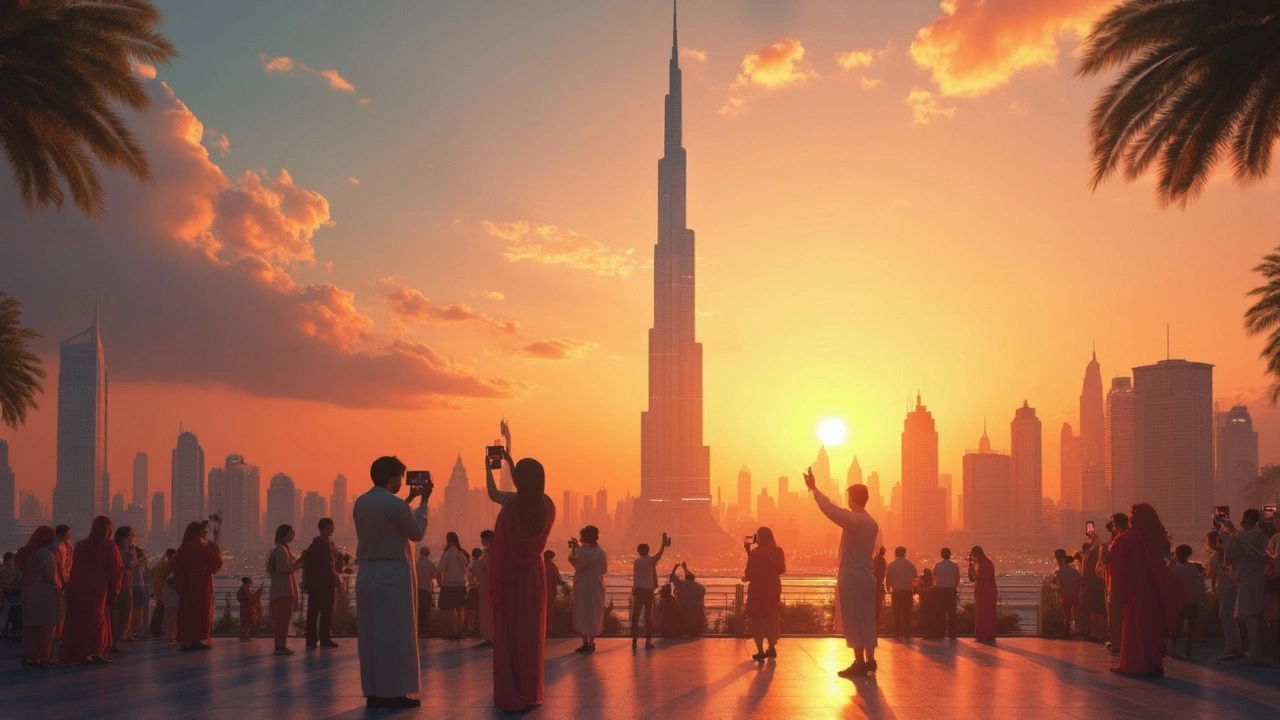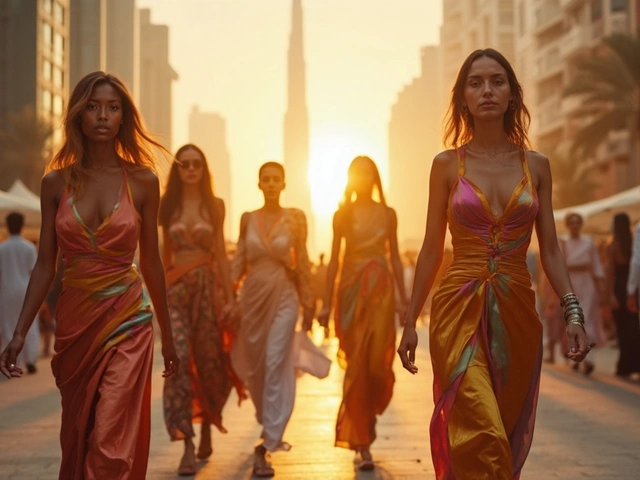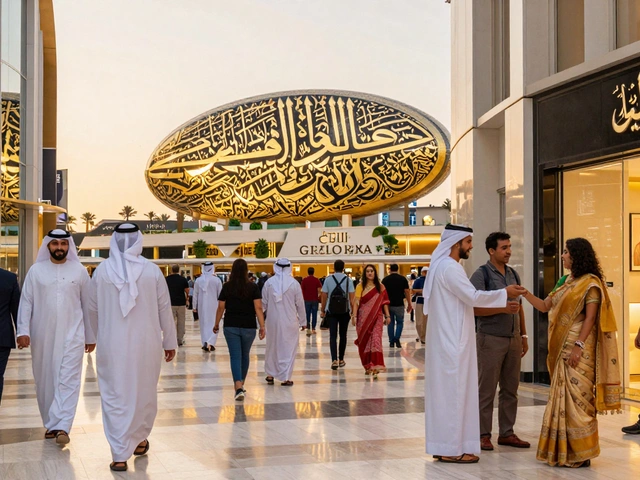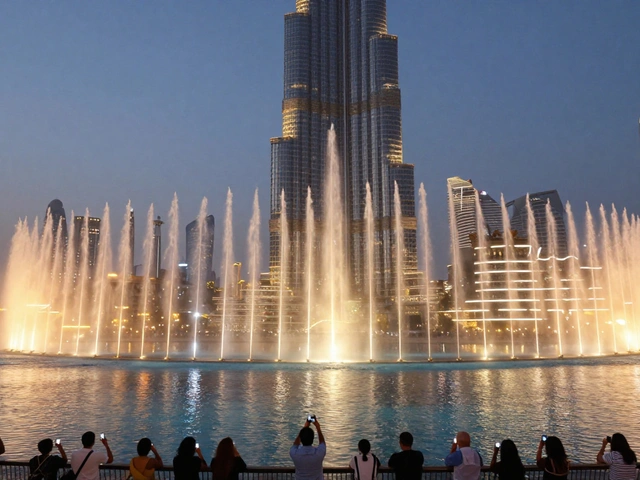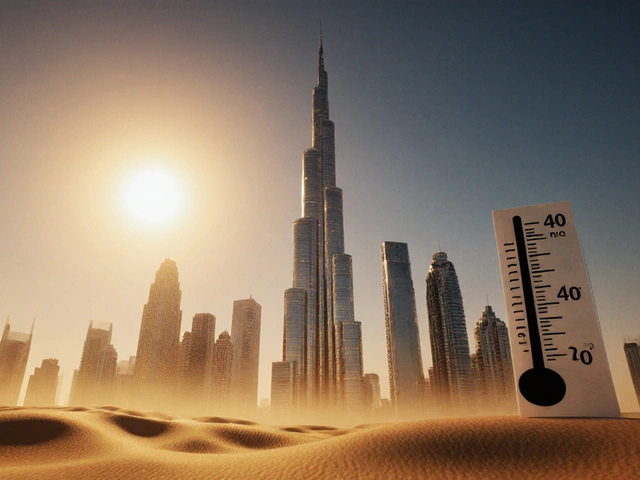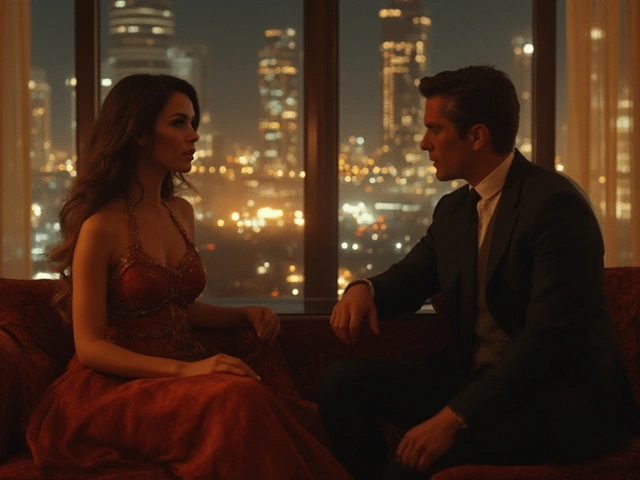Try walking through Downtown Dubai without staring up at the Burj Khalifa—almost impossible. It’s not just a massive building. This is Dubai’s loud signature, screaming ambition and wild ideas that somehow work. For anyone living in the city, or even popping in for a holiday, the Burj Khalifa isn’t just an attraction—it’s everywhere: on your coffee cup, on your license plate, in your social feed.
Locals know the drill: traffic slows near its base, you time your evening walks to catch the fountain shows hopping in sync with Khalid or Balqees. If you’re even a little bit into design or tech, seeing the way Burj Khalifa’s spire cuts the desert haze at sunrise is worth an early alarm. Even if you don’t go up, just hanging out in Burj Park or grabbing a karak at a nearby kiosk with the tower as your backdrop feels pretty epic. The place has become as much part of daily Dubai as shawarma joints and weekend trips to Alserkal Avenue.
Tourists might be wowed, but residents know where to get the best Instagram angle (hint: sunset from The Address Sky View’s infinity pool). And for anyone living in the shadow of the Burj, the midnight New Year’s fireworks are budgeted into your calendar like Ramadan lights or Dubai Shopping Festival sales. If you’re planning to visit soon, timing and tickets are everything—the lines can eat up an afternoon if you’re not prepared. Ask a local, and they’ll tell you to spring for the At The Top SKY experience, but don’t skip wandering the area’s lesser-known gems, like the quirky Al Safa Library or those cozy gelato spots hidden in Souk Al Bahar.
- Dubai's Skyline Rewrite: How Burj Khalifa Changed the City
- Design Secrets: What Keeps Burj Khalifa Standing
- Inside Access: Tips for the Savvy Visitor
- Burj Khalifa in Everyday Dubai
- The Tall Order: What Comes Next for Dubai
Dubai's Skyline Rewrite: How Burj Khalifa Changed the City
If you lived in Dubai before 2010, you know the skyline wasn’t always packed with glass and steel giants. The area where Burj Khalifa now stands—Downtown Dubai—was low-rise, mostly sand, and a world away from the city’s old neighborhoods like Deira or Al Fahidi. The launch of Burj Khalifa turned the city’s center of gravity south, pulling investors, brands, and families into what’s now one of the most expensive postcodes in the region.
Burj Khalifa isn’t just a tall building—it set off a building spree that made ‘skyline’ a real thing here. Before it, the Dubai World Trade Centre was the big deal at 149 meters. By 2010, Burj Khalifa literally shattered records, standing at 828 meters. That scale drew attention and money, leading to the rise of Emaar Boulevard, Dubai Mall, and the Opera District. Suddenly, luxury hotels and residential towers like Address Downtown and Armani Hotel followed, changing what luxury living means in Dubai.
The presence of the Burj also changed property values across Downtown. Rents for apartments facing, or even just near, the tower tend to cost 10–30% more than those a block away—simply because you wake up to a world-class view. Businesses in the area cash in on the foot traffic, especially with iconic attractions like The Dubai Fountain and Dubai Mall next door. Schools, parks, and even Friday prayer times in the area shift as crowds and families plan their days around life in the district.
Check out this quick comparison on how the Burj made its mark:
| Feature | Pre-Burj Khalifa Downtown | Post-Burj Khalifa Downtown |
|---|---|---|
| Iconic height (tallest building) | 149m (Dubai World Trade Centre) | 828m (Burj Khalifa) |
| Population Increase | Low residential, mostly office | Over 100,000+ residents in Downtown area |
| Property Value (per sq. foot) | AED 800–1,200 | AED 1,800–3,000+ |
| Major Events | National Day parades, sporadic events | NYE fireworks, DSF concerts, Ramadan Iftars |
Here’s what’s wild: before Burj Khalifa, nobody really visited Downtown unless you had office business. Now, more than 15 million people visit Dubai Mall each month—partly to get a selfie with the Burj Khalifa in the background. There’s even a running track looping around the park, and Friday markets pop up in winter. The building didn’t just change the skyline—it created a whole new way people live, play, and do business in Dubai.
Design Secrets: What Keeps Burj Khalifa Standing
Stacking floors to reach over 828 meters in Dubai’s wild climate isn’t just showing off. Every meter of the Burj Khalifa’s height needed tested engineering tricks to beat the wind, weight, and shifting sand underneath it. The key to its super strength? The unique triple-lobed foundation shaped like a Y, known as a “buttressed core.” This keeps the tower from twisting in those shamal winds that can hit hard out here during summer. Each wing balances the others, stopping the whole tower from swaying too much—smart move for anyone sipping a coffee on the 148th floor.
Just look at the materials. The Burj Khalifa’s frame is a mix of reinforced concrete and steel, with enough concrete poured to fill more than 100 Olympic pools. Steel spires on top? They’re lighter for less load but still strong enough to handle Dubai’s hot sun and rare storms. During construction, builders watched sand movement and water depth closely, pouring the foundation 50 meters deep—about as deep as five Dubai Metro cars stacked. The cooling systems inside had to be next-level, too, pumping ice-chilled water through 100 km of pipes to keep it comfortable even when it’s 45°C outside.
Here’s a look at the Burj Khalifa’s basic engineering numbers:
| Feature | Figure |
|---|---|
| Total Height | 828 m |
| Number of Floors | 163 + service levels |
| Foundation Depth | 50 m |
| Concrete Used | ~330,000 m³ |
| Rebar Steel | ~39,000 tonnes |
| Wind Loads Tolerated | Up to 240 km/h |
Another cool trick? The setbacks on each wing as the building rises aren’t just a style move. They break up wind, so the usual whistling skyscraper noises don’t keep residents up at night. The cladding is high-tech reflective glass, made to block out heat and reflect sun glare—super important with Dubai’s endless sunshine.
- Heavy-duty pumps cool the water towers for daily use, keeping things fresh through even the worst August heatwaves.
- The spire up top makes up over 200 meters of the overall height and even has special LED strips for those wild light shows during Expo or National Day.
- Burj Khalifa uses a tuned mass damper—a hidden weight system—to stop any uncomfortable shaking on the highest floors.
The Burj Khalifa stands thanks to a mix of deep foundations, thoughtful shaping, crazy-strong materials, and a bunch of small tricks local engineers developed on the fly. It’s not just tall for show—every inch is there because Dubai demanded the absolute best.
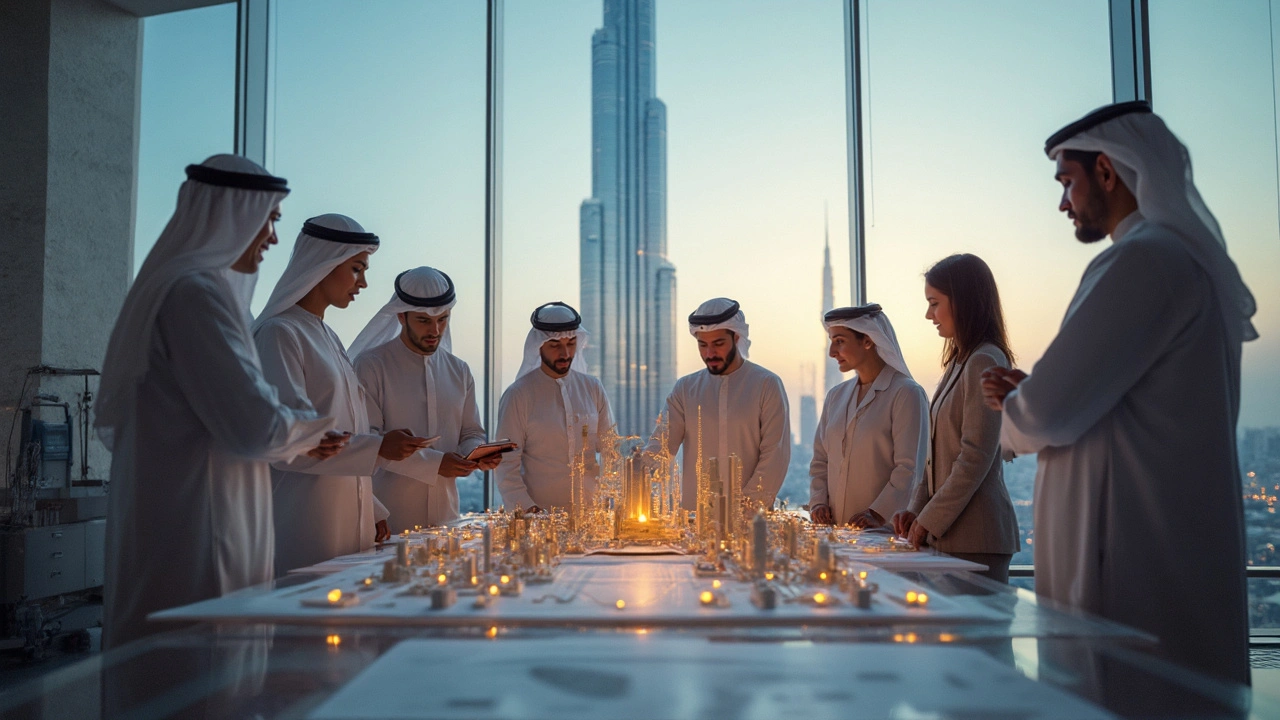
Inside Access: Tips for the Savvy Visitor
If you’re planning a trip to the Burj Khalifa, you want to skip rookie mistakes and get the best out of your visit. Locals will tell you: timing is everything, and planning ahead pays off in Dubai, especially for big attractions like this.
Let's start with tickets. Pre-book online, because walk-up prices are much steeper and slots fill fast—especially around sunset. Go for the "At The Top" experience (levels 124 and 125) if you want panoramic city views, or splash out on "At The Top SKY" for level 148. They throw in lounge access and less crowded spaces, which is totally worth it for Eid or New Year’s when Downtown is bursting with visitors.
- Best time to visit: Early morning or after 7 PM if you want thinner crowds. Sunset hours are gorgeous but super busy.
- Fast track your entry: Residents can use their Emirates ID for discounts, and kids under four are free.
- Photo ops: The outdoor terrace on level 124 gives clear shots. For the brave, The Lounge (levels 152-154) is the highest spot open to the public—great for social bragging rights.
- Dress smart: Air conditioning can get chilly up high, so a light jacket isn’t a joke, even in Dubai summer.
- Parking: Free for four hours at Dubai Mall, but be prepared for a ten-minute walk indoors from the Grand Parking to the Burj Khalifa lobby. Alternatively, take the Dubai Metro to Burj Khalifa/Dubai Mall station for smooth access.
Here’s a handy table breaking down typical ticket prices as of May 2025 (in AED):
| Experience | Adult | Child (4-12 yrs) | Prime Hours* |
|---|---|---|---|
| At The Top (124/125) | 169 | 139 | 259 |
| At The Top SKY (148) | 399 | 399 | 553 |
| The Lounge (152-154) | 769 | - | 829 |
*Prime Hours: 4 PM to 6:30 PM, especially busy during winter and public holidays in Dubai.
Don’t forget the Dubai Fountain show—grabs huge crowds multiple times in the evenings just outside the tower. If you want an uninterrupted view, book a window seat at restaurants like Serafina or Thiptara in Souk Al Bahar across the lake. They fill up fast, so decent lead time pays off, especially on weekends.
Finally, check event schedules—big annual bashes like New Year’s Eve need extra planning (sometimes streets close, and access points change with extra security). Sign up for Burj Khalifa’s online alerts to get the latest updates, especially if you live nearby. Dubai doesn’t do “normal” when it comes to big nights out, and nobody wants to be left at the security gate.
Burj Khalifa in Everyday Dubai
People in Dubai interact with the Burj Khalifa way more than just snapping selfies or touring the observatory. This tower pops up in regular routines, whether you’re a local, an expat, or you’re just dropping by. Let’s get real: The building is like a massive compass, helping you navigate Downtown’s maze and even guiding cab drivers when Google Maps goes rogue. If someone says, “Meet me by the fountain,” you both instinctively picture the Burj’s reflection.
The area around Burj Khalifa is buzzing on weekends and holidays. Families use Burj Park for picnic spots, especially during winter when the weather cools down. Joggers track their steps past the tower, and you can't ignore the cyclists weaving around Mohammed Bin Rashid Boulevard. Want a low-key vibe? Folks grab karak tea and soak up the view after midnight, since a lot of cafes like %Arabica and Joe & The Juice keep their doors open late.
Events? Burj Khalifa’s got them nailed. Ramadan light shows, National Day colors, New Year’s fireworks that basically turn the whole area into a theme park. In fact, according to Emaar, the New Year’s Eve show pulls crowds of over 1 million people, including viewers lining Sheikh Mohammed Bin Rashid Boulevard, Burj Park, and The Dubai Mall promenades.
Here’s a quick look at how the Burj Khalifa shows up in Dubai’s local life:
- School kids take field trips to the viewing deck for science and history lessons.
- Corporate teams book At.mosphere for power breakfasts—nothing like closing a deal with a 360-degree city view.
- Dubai’s Instagram fans race to get the perfect shot after every rain shower, since the tower seems to poke into the clouds.
- On special occasions, the tower lights up with personal messages, marriage proposals, and even birthday wishes (yep, there’s a website to book your own message for a hefty fee).
And it’s not just about glitz—plenty of people living in the area set their daily routines around the building’s events schedule. Even delivery drivers have to plan routes to avoid fireworks traffic. Here’s a quick data table showing how the Burj Khalifa shapes big days in Dubai:
| Event | Estimated Crowd | Area Impact |
|---|---|---|
| New Year's Eve Fireworks | 1,000,000+ | Traffic, road closures, high hotel occupancy |
| National Day Light Show | 250,000+ | Longer wait times, increased public transport use |
| Ramadan Light Displays | 100,000+ | Late-night gatherings, boosted cafe sales |
Bottom line—whether you’re grabbing groceries at Spinneys on Emaar Boulevard, going for an outdoor yoga class at Burj Park, or just dropping kids at Emaar Square, the Burj Khalifa is more than an iconic building. It’s woven into the fabric of everyday Dubai life, as familiar as the warm wind or an evening stroll along the canal.
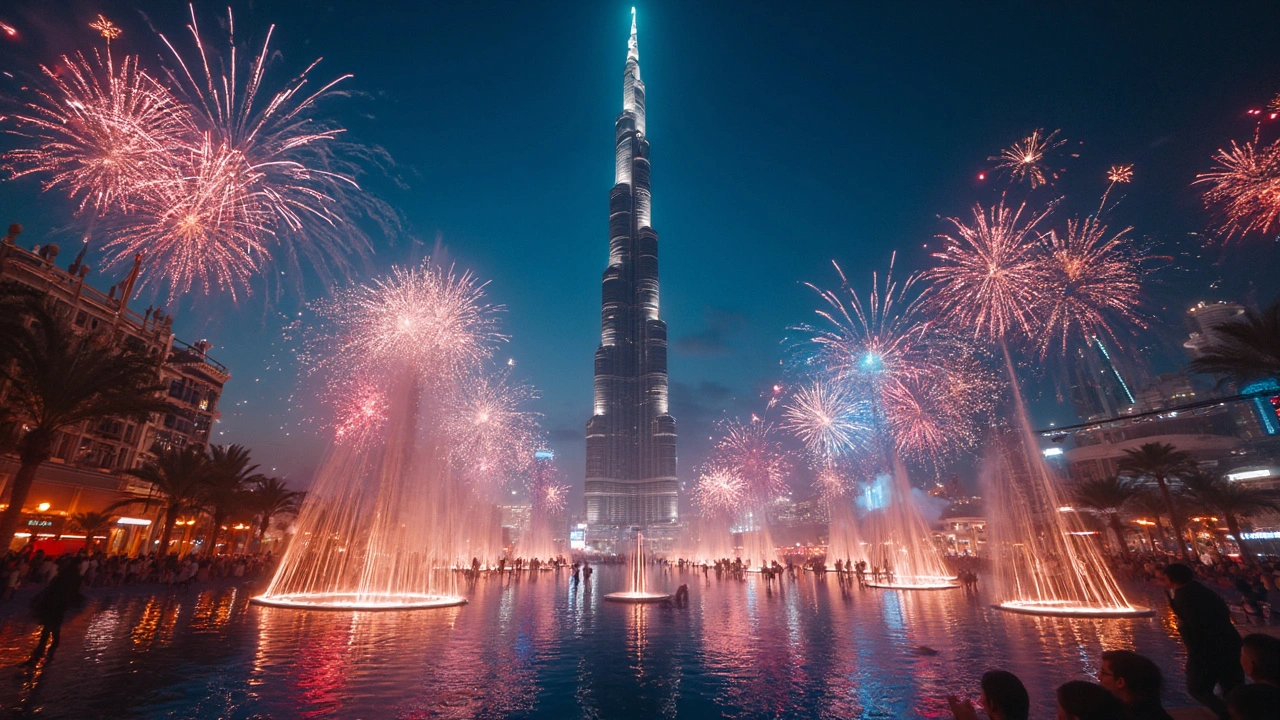
The Tall Order: What Comes Next for Dubai
For a city famous for topping its own records, the Burj Khalifa isn’t the finish line—it’s just another stepping stone. Some real estate insiders say the buzz is now about the Dubai Creek Tower, expected to be even taller than the Burj Khalifa. While construction is paused as of 2024, the city’s ambition hasn’t slowed. Developers like Emaar and Dubai Holding keep teasing massive projects, combining futuristic design with sustainability—no small feat for a place with sandstorms and scorching summers.
Locals laugh that the moment a record is set in Dubai, someone’s already planning to break it. With Expo City Dubai now open and new districts like Dubai South ramping up development, the city isn’t just growing up—it’s growing outward. District 2020 is bringing in tech startups, green buildings, and new community events, all aiming to keep Dubai on the world map after Expo 2020 wrapped up.
For everyday folks, this means a lot of change. Expect new attractions, more green spaces like the planned Dubai Urban Tech District, and even better connections between areas with public transport expansions. And yes—more food trucks, more quirky pop-ups, and more ideas for Instagram.
- If you’re thinking about buying property anywhere with a Burj Khalifa view, now’s the time—the skyline’s next phase might block or even steal the show.
- Bookmark upcoming events at Dubai Opera or check out Burj Al Arab’s new exhibitions. The city is constantly refreshing its calendar with world-class stuff to do, right next door to the biggest tower on earth.
- Anyone interested in engineering or urban planning should watch local universities like the American University in Dubai, which often partners with global experts to build the city’s next big thing. If you’re hoping to work in this field, there’s no better classroom than Dubai right now.
Dubai’s not planning to slow down. If the Burj Khalifa made history, the city’s next round of projects is set to make headlines all over again—and being here means you’ll have a front-row seat to watch it happen.

